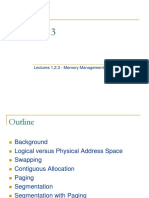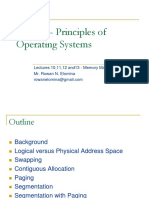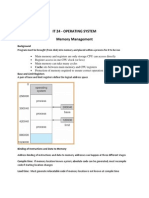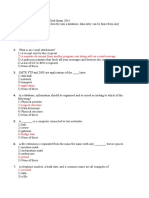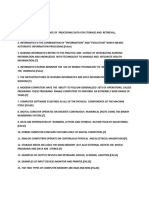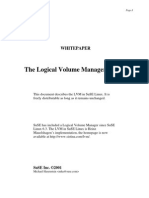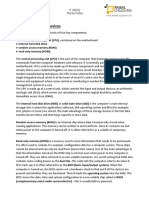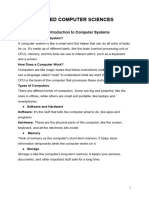0% found this document useful (0 votes)
352 views58 pagesChapter 9. Main Memory (Updated)
This document discusses main memory and memory management techniques. It begins by explaining how programs must be loaded into main memory to execute and discusses the hardware protection of separate memory spaces for different processes. It then covers contiguous memory allocation and issues like fragmentation that can occur. Paging and page tables are introduced as solutions to these problems by mapping logical to physical addresses dynamically. The concepts of logical versus physical address spaces and dynamic loading and linking of programs are also summarized.
Uploaded by
마날루 가브리엘학부생Copyright
© © All Rights Reserved
We take content rights seriously. If you suspect this is your content, claim it here.
Available Formats
Download as PDF, TXT or read online on Scribd
0% found this document useful (0 votes)
352 views58 pagesChapter 9. Main Memory (Updated)
This document discusses main memory and memory management techniques. It begins by explaining how programs must be loaded into main memory to execute and discusses the hardware protection of separate memory spaces for different processes. It then covers contiguous memory allocation and issues like fragmentation that can occur. Paging and page tables are introduced as solutions to these problems by mapping logical to physical addresses dynamically. The concepts of logical versus physical address spaces and dynamic loading and linking of programs are also summarized.
Uploaded by
마날루 가브리엘학부생Copyright
© © All Rights Reserved
We take content rights seriously. If you suspect this is your content, claim it here.
Available Formats
Download as PDF, TXT or read online on Scribd
/ 58






